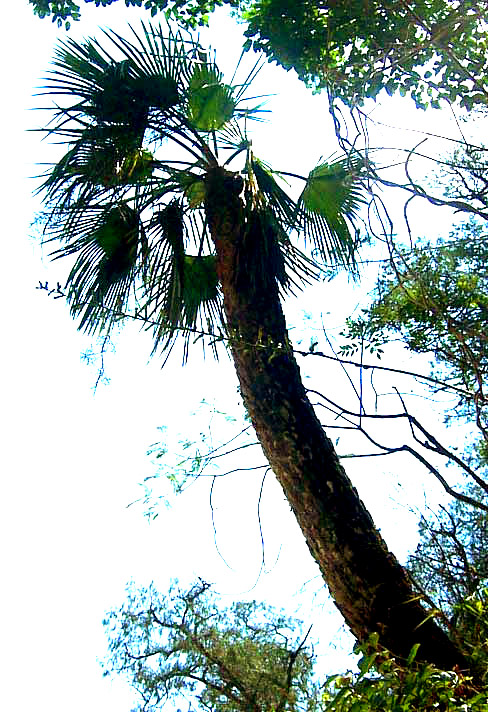Excerpts from Jim Conrad's
Naturalist Newsletter
from the June 22, 2007 Newsletter issued from Sierra Gorda Biosphere Reserve, QUERÉTARO, MÉXICO
APAK PALM
In the mountains near San Juan de Los Durán (elevation ~1400m (4600ft), ~N21.47°, ~W99.17°), another eye-catching plant in very dry, thin soil where white limestone outcropped on steeper slopes was the 10-ft-high fan-palm shown below:

That's a Brahea, and there's only one Brahea listed for our region, which is BRAHEA MOOREI.* However, I can't find any reference to this species producing such a monumental trunk as the one shown in my picture. Pictures on the Internet usually portray trunkless plants, or ones with very short trunks, sometimes running along the ground.
Either the Braheas in this area are much older or for some reason more developed than the ones people elsewhere have seen, or it's a different species altogether. This makes my botanist blood gurgle, but I'm in no position to figure it all out.
Even here most specimens are trunkless or very short-trunked. However the occasional trunked plants such as the one in the picture manage to impart to the landscape a real exotic flavor.